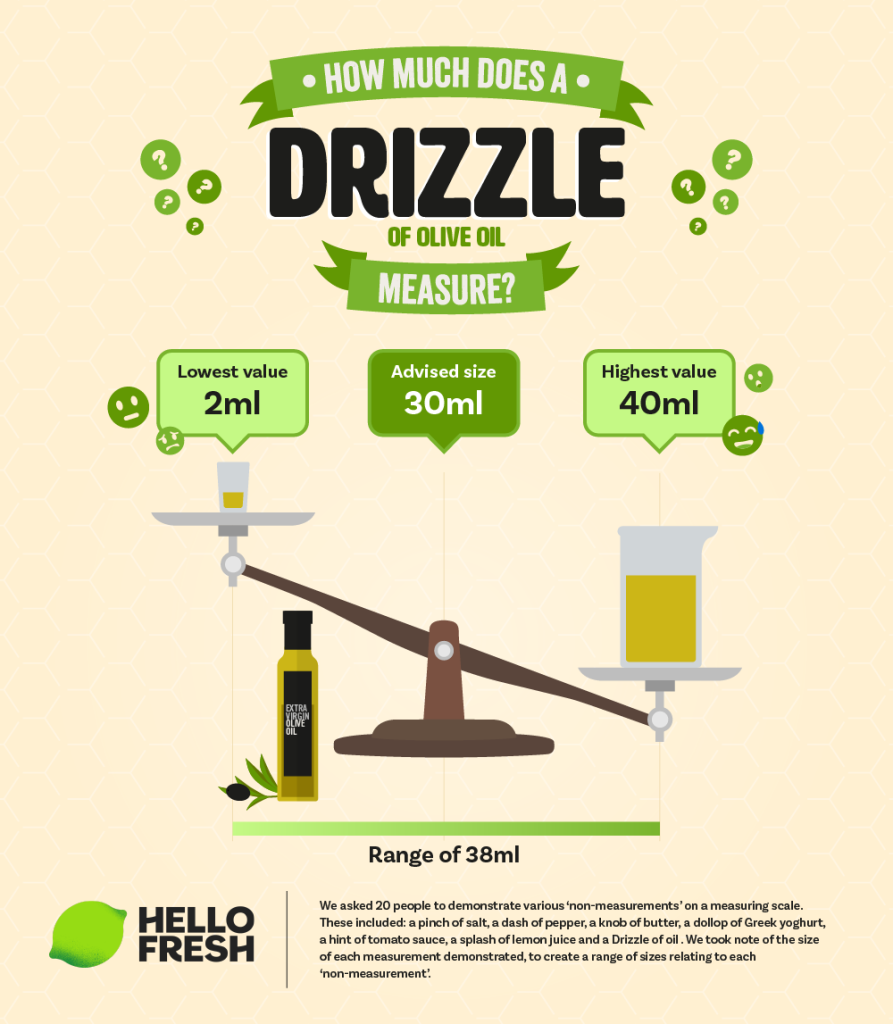-
New research demonstrates how confusing non-measurement of ingredients like a ‘drizzle’ or a ‘pinch’ can be when used in recipe instructions.
-
The term with the most variety in size within the sampling was a ‘dollop’ with a wide range of 45g differences in demonstrations.
-
Experts share that accurate measurements are important for cooks to gain confidence in the kitchen and for recipes to be more accessible.
Whether you’re using recipes from a cookbook, online, TikTok or even Instagram, food content creators around the world often approach their measurements with a range of different terms that can leave novice cooks vulnerable to their own interpretations.

Worldwide, Google searches for ‘how much is a pinch of salt?’ are up 48% in the last year as confusion becomes the norm globally for these non-measurement measurements.
New research conducted by food box delivery service, HelloFresh, asked participants to demonstrate a range of non-measurements to gain insight on the results of varied language use in a recipe.

Results portrayed that individuals felt smaller descriptions such as a ‘pinch’ or a ‘dash’ were fine in a recipe as they were unlikely to ruin a dish but that more clarity was needed for larger measurements with one participant feeling they would struggle with vague measurements for a meal’s key ingredient.
Some participants felt that certain terms were more confusing than others. One commented that a ‘drizzle’ seemed much easier to internally visualise than a ‘dollop’ – which they felt sounded like a ‘far-ranging’ term.
The Most Confusing Non-Measurements In Recipes
|
Measurement |
Lowest value |
Highest value |
Range |
Advised size |
|
Knob |
5g |
39g |
34g |
30g |
|
Dollop |
21g |
66g |
45g |
15g |
|
Hint |
1ml |
12ml |
11ml |
0.1ml |
|
Splash |
2ml |
10ml |
8ml |
5ml |
|
Drizzle |
2ml |
40ml |
38ml |
30ml |
The results of the research highlighted the breadth of confusion around these measurements. The measurement with the most variety in size was a dollop, with a total range of 45g in demonstrations. Following this was a drizzle with a 38ml range.

When asked how they would approach these differing non-measurements in the kitchen results also varied. One participant claimed they would “completely improvise” while another felt they used “muscle memory” to put the same amount in each time.
Preference also played a role, with a portion of respondents using less of an ingredient they didn’t like – and using more when they did: “I love tomato sauce so I’d use loads.”HelloFresh’s Recipe Development Lead, Sam Richards , commented: “Recipes are great for giving new, unseasoned cooks more confidence in the kitchen but that only works if they’re easy to follow.
“Easy to follow recipes should be clear, concise and not have too many steps involved. The ingredients list shouldn’t leave too much space for confusion and should be measured in a way that’s accessible to everyone staying consistent throughout.
“Once cooks gain more confidence they will be able to venture off the plan to increase certain tastes and flavours to their liking but this should be due to personal preference, not because a recipe is too difficult to interpret.

“Here at HelloFresh, we always provide clear and easy-to-follow instructions for our customers, so that you never have to be confused.”
For access to a range of easy recipes suited for the whole family, head to hellofresh.co.uk.



